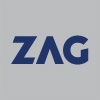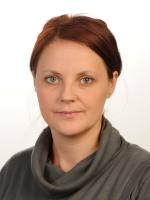The Section for Building Structures and Earthquake Engineering
About the Section:
- fundamental and applicative research in the field of the response of buildings to seismic loads
- laboratory and field tests of structural elements and buildings
- expert support in the case of newly-designed buildings and the repair and strengthening of existing buildings
- the preparation of technical assessments and agreements, and certification
- international co-operation
Research work:
- research into the behaviour of buildings and civil engineering structures in the case of seismic loads;
- development and implementation of new experimental and analytical methods;
- research and experimental verification of technological solutions for the aseismic strengthening of existing building structures.
Expert activities:
- determining the condition of existing building structures;
- laboratory and field tests of structures and structural elements;
- loading tests of various types of concrete and masonry structures;
- technical (geodetic and other) monitoring of buildings and other civil engineering structures;
- expert studies in the field of earthquake engineering;
- preparation of technical assessments and agreements;
- performance of tests to determine the suitability of new structural systems;
- inspections of buildings before and after the performance of works in their vicinity.
Activities in the field of certification:
On behalf of the Certification Service, the Section’s experts perform assessments of the factory production control of reinforced-concrete shuttering elements as well as metal and plastic anchors.
Education and training activities in the following fields:
- mentoring of Ph.D. theses;
- co-mentoring of graduate theses;
- courses in connection with the technical regulations for the design of earthquake-resistant building structures;
- the fundamentals of earthquake engineering;
- experimental testing methods in earthquake engineering;
- determining the useability of buildings that have been damaged in earthquakes when mitigating the consequences of such earthquakes.
Research equipment:
- a single-component shaking-table with a 2.0 x 3.2 m platform (maximum payload: 5000 kg, maximum acceleration: 5 g;
- a single-component shaking-table for the investigation of the liquefaction of soils (pressure vessel with a max. pressure of 4 bar);
- a servo-hydraulic testing system with a set of 2-way actuators with capacities of 16 kN to 1000 kN;
- two hydraulic pumps with a total flow of up to 245 l/min at a working pressure of 280 bar;
- a 10.0 x 10.0 m strong floor and a 6.0 x 7.0 m reaction wall;
- measuring equipment and data acquisition systems;
- field testing equipment.
Awards (since 2005):
- Marjana Lutman in Professor Miha Tomaževič (2005): The Farzad Naeim Prize, Earthquake Engineering Research Institute / International Association for Earthquake Engineering, World Housing Encyclopedia, ZDA.
- Professor Miha Tomaževič (2005): The Scalzi award, The Masonry Society (USA).
- Professor Miha Tomaževič and Assistant Professor Matija Gams (2011): Award for exceptional achievements in the field of science in Slovenia / ARRS – the Slovenian Research Agency.
- Professor Miha Tomaževič (2010): Lifetime achievement award in the field of the construction of buildings / Chamber of Engineers of Slovenia.
- Prof.dr. Miha Tomaževič (2013): Special recognition award of the 12th Canadian Masonry Symposium in recognition of extensive achievements in the field of masonry research and many years of support for the Canadian Masonry Symposium.
| More recent important projects: | ||
|---|---|---|
| PROJECT | FINANCING | DURATION |
| Seismic behaviour of multistory shear-walls with openings | ARRS | 2014-2017 |
| POTROG, POTROG 2 Seismic Risk in Slovenia for Civil Protection |
Ministry of Defence RS | 2011 – 2013, 2015 – 2016 |
| The seismic resistance of modern masonry structures | ARRS | 2010 – 2012 |
| Cyclic shear tests of walls and shaking table test | TZUS, Prague | 2012 |
| Seismic risk of buildings in the Municipality of Ljubljana | The Municipality of Ljubljana | 2000 – 2012 |
| Experimental research on the seismic behaviour of historic brick masonry | University of Natural Resources and Applied Life Science, Vienna | 2008 – 2011 |
| Seismic behaviour of Ytong houses: model shaking table tests | Xella porobeton SI, d.o.o. | 2010 |
| Cyclic shear tests of walls built with different blocks and mortar types | Austria | 2010 |
| COST TU 1404 Towards the next generation of standards for the service life of cement-based materials and structures |
EU COST project | 2014 – |
| COST TU 1207 Next Generation Design Guidelines for Composites in Construction |
EU COST project | 2013 – 2017 |
| CHERPLAN Enhancement of Cultural Heritage through Environmental Planning & Management Seismic risk of buildings in the Municipality of Idrija |
Municipality of Idrija | 2012 – 2013 |
| Innovative techniques to increase resistance to earthquakes of cultural heritage buildings | INCO-COPERNICUS | 1997-2000 |
| Cyclic shear tests of walls and shaking table test | Xella, Czech Republic | 2011 |
| Reduction of the seismic vulnerability of historic masonry buildings by the application of CFRP strips and seismic isolation | ARRS | 2008 – 2011 |
| “Construction Faults” Analysis of the present state and instruments for monitoring the occurrence of faults during construction works |
Ministry of the Environment and Spatial Planning RS | 2008 – 2009 |
| TPSG Technical conditions for quality assurance during the construction of residential buildings |
The Housing Fund of RS | 2007 – 2009 |
| The influence of robustness of masonry units and type of construction on seismic behaviour of masonry walls | MVZT | 2004 – 2006 |
| SAMCO Structural assessment, monitoring and control |
EU FP5 | 2003 – 2006 |
| Optimization of shape of masonry units and technology of construction for earthquake resistant masonry buildings | Brick Industry Associations of Slovenia, Austria, Italy, Germany and Switzerland | 2003 – 2005 |
| PeBBu Performance Based Buildings |
EU FP5 | 2002 – 2005 |
| ONSITEFORMASONRY On-site investigation techniques for the structural evaluation of historic masonry buildings |
EU FP5 | 2001 – 2005 |
| COST C12 Improving Building’s Structural Quality by New Technologies |
EU COST project | 2001 – 2005 |
| Cyclic shear tests of walls from prototype hollow clay block masonry | TZUS | 2012 |
| Analysis of buildings after the earthquake of Bovec of July 12, 2004 | MOPE | 2004 |
| Research on behaviour factor for masonry structures | Deutsche Gesellschaft für Mauerwerksbau | 2000 – 2004 |
| Building and Civil Engineering Structures | MŠZT | 1999 – 2003 |
| Shear characteristics of soil from the moving mass of the Stože pod Mangrtom landslide | MO | 2002 |
| Seismic isolation of historic masonry buildings | MZT | 1997 – 2001 |
| The influence of the earthquake of Bovec of April 12, 1998, on buildings, people and environment | MZT, MOP, MO | 1998 – 2000 |
| Innovative techniques to increase seismic resistance of cultural heritage buildings | INCO-COPERNICUS | 1997 – 2000 |
| Seismic behaviour of reinforced concrete shear walls | MZT | 1996 – 2000 |
Memberships of international associations:
- The Slovenian Institute for Standardization
- The Chamber of Engineers of Slovenia
- EOTA Working Group: Anchors
- EOTA Project team PT10 – Seismic Actions
- CEN TC 166, WG 3 – Clay/Ceramic Chimneys
- EERI – WHE (World Housing Encyclopedia) – Editorial Board
- CEN TC 250 / SC 8 WG-1 – Masonry
- CIB COMMISSION W023 – Wall Structures
- SIST/TC: KON.006 – Masonry structures – EC6
- SIST/TC: KON.008 – Earthquake-safe structures – EC 8


